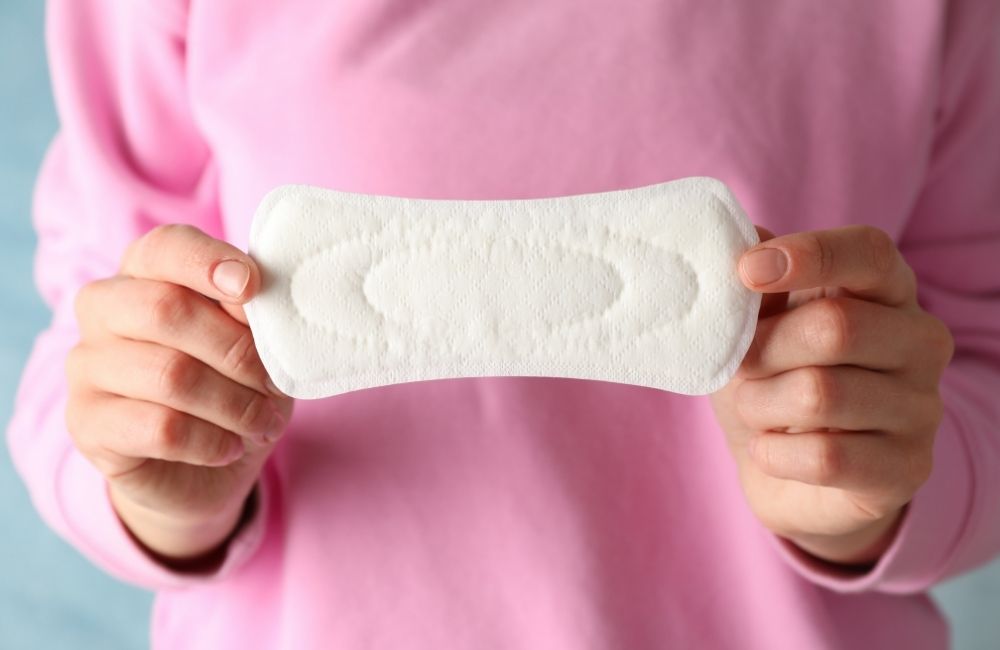Have you ever wondered how those trusty sanitary pads work their magic? Well, wonder no more! In this article, we’ll go through the fascinating world of menstrual hygiene and explore the science behind these essential products. From their simple yet effective design to their ability to keep us comfortable and confident, sanitary pads have been a game-changer for women across the globe. So, join me as we unravel the mysteries of how sanitary pads work and discover why they remain the go-to choice for millions of women worldwide.
How do Sanitary Pads Work?

Well, it’s actually quite simple. Sanitary pads are designed to absorb menstrual blood, keeping it away from your skin and clothing. They come in various sizes and thicknesses to accommodate different flow levels, ensuring maximum comfort and protection.
These pads are typically made of multiple layers. The top layer is made of a soft, breathable material that keeps you dry and helps prevent any discomfort or irritation. The middle layer is where the magic happens – it contains an absorbent material, such as cellulose or superabsorbent polymers, which quickly soaks up the menstrual flow.
The bottom layer is usually made of a leak-proof material, such as polyethylene or polypropylene, which prevents any leakage and helps keep you feeling confident and secure. Some pads also come with adhesive wings on the sides to ensure a snug fit and added protection against leaks.
One of the key advantages of sanitary pads is their long-lasting power. Depending on your flow, you can wear a pad for several hours without having to worry about changing it. This makes them especially convenient for overnight use or when you’re on the go.
Types of Sanitary Pads

When it comes to choosing the right sanitary pad for your period, there are a few different options to consider. Here are the most common types of sanitary pads available:
1. Regular Pads
Regular pads are the go-to choice for many women during their menstrual cycle. Designed for moderate to heavy flow days, these pads offer reliable protection and are available in various sizes to accommodate different needs. They have a soft top layer that feels comfortable against your skin and a leak-proof bottom layer to prevent any accidents. Regular pads are easy to use and can be worn day or night, providing you with the confidence and peace of mind you need during your period.
2. Overnight Pads
For those nights when you want extra protection, overnight pads are the perfect choice. These pads are longer and more absorbent than regular pads, allowing you to sleep soundly without worrying about leaks. Overnight pads provide maximum coverage and are specifically designed to absorb heavy flow while you sleep. With their extra length and absorbency, you can rest assured knowing that you’ll wake up feeling fresh and comfortable.
3. Pantyliners
Pantyliners are thinner and lighter than regular pads, making them ideal for everyday use or for those days with light spotting. They provide a minimal and barely noticeable presence when worn, giving you added comfort and protection. Pantyliners are also great for use at the beginning or end of your period when the flow is very light. Just like regular pads, pantyliners have a soft top layer and a leak-proof bottom layer, ensuring that you stay fresh and dry throughout the day.
Choosing the Right Sanitary Pad

1. Flow
When selecting a sanitary pad, it’s important to consider your flow. Every person who menstruates has a unique cycle with variations in duration and flow. While some may experience heavy flow that can last several days, others may have lighter flow and shorter durations. Choosing a pad that matches your flow is essential for maximum comfort and protection. Using a pad designed for heavy flow when you only experience light flow may lead to unnecessary discomfort and the perception that you don’t need to change your pad as often.
2. Size and Shape
Sanitary pads come in a range of sizes to accommodate different body shapes and flow. It’s important to pick the size that fits you best based on your panty size and when you’ll be wearing it – whether it’s during the day or at night. Remember, a pad that is too small may not provide adequate coverage, while a pad that is too big may feel uncomfortable. Pads with longer lengths are often recommended for nighttime use, while smaller lengths are suitable for lighter flow and day use.
3. Material
Another factor to consider when choosing a sanitary pad is the material it’s made of. Many pads are now made with comfortable, breathable materials that help reduce the risk of irritation or skin allergies. Look for pads made with cotton or other natural fibers, as they tend to be more gentle on the skin. It’s also important to check if the pad has a soft top layer, as it can help enhance your overall comfort throughout the day.
4. Wings or No Wings
Sanitary pads come in two main types: with wings and without wings. Wings are flaps on the sides of the pad that fold over the edges of your underwear, helping to keep the pad in place and prevent leaks. If you are someone who experiences heavy flow or tends to move around a lot, pads with wings are highly recommended. They provide added security and reduce the risk of leakage, giving you the freedom to go about your day without worry. However, if you prefer a more minimalistic option or have lighter flow, pads without wings can still provide sufficient protection.
FAQs
How long do sanitary pads last?
The length of time a sanitary pad lasts depends on factors such as flow and personal preference. Typically, a pad should be changed every 4 to 6 hours to maintain hygiene and prevent leakage. However, it is important to monitor your flow and change pads more frequently if needed.
Can I wear a pad overnight?
Yes, you can wear a pad overnight. Many sanitary pads are designed to provide overnight protection with an extra-long length and additional absorbency. Overnight pads are often wider and have better coverage to prevent leaks while you sleep. It is essential to choose the right pad for overnight use to ensure comfort and peace of mind.
Can I reuse a pad?
No, sanitary pads are not reusable and should be disposed of after each use. Reusing a pad can increase the risk of infection and compromise hygiene. It is essential to use a new pad for each menstrual cycle to maintain cleanliness and prevent any potential health issues.
I am a medical student with experience and interest in Women’s health and well-being.